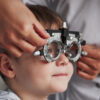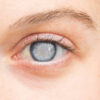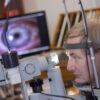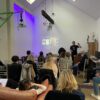Binocular vision is the brain combining slightly differing images from both (bi) eyes (ocular) to form vision. The brain uses the images to understand the distance to and speed of an object (depth and movement perception).
Dysfunction occurs when both eyes do not coordinate to provide accurate perceptions to the brain. You can see what this is like by covering one eye and trying to catch a ball or pour water into a glass. These tasks become difficult due to the loss of depth and movement perception. Over time, they become easier, and most people live with dysfunction for years before diagnosis.
There are various reasons for binocular vision dysfunction, including reduced vision in one eye, issues in the brain when comparing images, and loss of eye movement coordination. For the brain to calculate perceptions, images from both eyes must be of the same visual scene. When the eyes point in different directions, the images differ too much.
Symptoms include:
- Vestibular symptoms (dizziness, nausea, and drifting to the side when walking)
- Head, neck, and shoulder symptoms (headaches, muscle pains, and eye pain)
- Driving symptoms (feeling like lights, stop signs, and the car are moving)
- Anxiety symptoms (becoming overwhelmed by lots of detail in large spaces and general anxiety)
- Reading difficulties (difficulty concentrating, skipping words and lines, and tiredness)
- Sleep symptoms (restlessness and dizziness)
- Diplopia and vision symptoms (light sensitivity, double vision, and eye strain)
Children mainly struggle with depth and movement perception so it can be easier to notice symptoms when:
- Pouring drinks
- Catching balls
- Walking up and down stairs
The NHS eye test does not test for all vision issues, so diagnosis of lost or dysfunctional binocular vision needs an in-depth analysis. Treatments range from glasses which correct eye alignment, to vision therapy.
For children, TK&S offers vision therapy adapted depending on the child and their visual needs. It can involve lenses, prisms, filters, and other equipment. Success depends on the child’s and parent’s active engagement as well as the optometrist’s expertise.
Therapy consists of six appointments spaced over 12 weeks. Examinations are repeated in the final appointment to assess improvements in binocular vision. If necessary, vision therapy can extend to 18 sessions. TK&S aims to provide clear, comfortable binocular vision for the child and reduce their eye strain which will improve their reading, learning, and perceptions.





